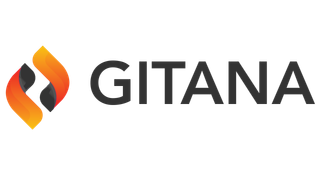Found 1142 results for "gitana 4.0 engine security access-policies conditions and"
The search executed in 0.0037 seconds. That's fast.

|
Gitana 3.2 / Guide / Guide / Content Modeling / Definitions / Content Type DefinitionDocumentation Reference Learn how to define and manage content types in Cloud CMS using JSON schemas and the Content Model Builder. (Gitana 3.2)
Score: 0.3439
|

|
Gitana 4.0 / Content Engine / Content Models / Definitions / Content Type DefinitionDocumentation Reference Learn how to define, create, and manage content types using Cloud CMS with JSON schema and Content Model Builder. (Gitana 4.0)
Score: 0.3439
|

|
Gitana 3.2 / Guide / Guide / WorkspacesDocumentation Reference Optimize your content collaboration with Cloud CMS Workspaces. Create, share, and manage projects seamlessly from one platform. (Gitana 3.2)
Score: 0.3438
|

|
Gitana 3.2 / Guide / Guide / API / Data Types / DirectoryDocumentation Reference Optimize directory data management and configuration with identity objects, credentials, and social system connectivity. (Gitana 3.2)
Score: 0.3436
|

|
Gitana 3.2 / Guide / Guide / API / Data Types / DomainDocumentation Reference Manage data effectively with our domain store: configure properties, query, and update user groups seamlessly. (Gitana 3.2)
Score: 0.3436
|

|
Gitana 3.2 / Guide / Guide / API / Data Types / RepositoryDocumentation Reference Efficiently store and manage content with our repository platform, featuring versioning, configurable properties, and rich query capabilities. (Gitana 3.2)
Score: 0.3436
|

|
Content Model - Association exampleSupport Article Learn how to implement seamless customer data updates in orders through content associations in Cloud CMS. (Support 1.0)
Score: 0.3434
|

|
Gitana 4.0 / User Interface / User Interface / Image EditorDocumentation Reference Edit images effortlessly with CloudCMS Image Editor. Zoom, crop, rotate, and apply templates to enhance your visuals. (Gitana 4.0)
Score: 0.3433
|

|
Gitana 3.2 / Guide / Guide / Integrations / Amazon Web Services / Amazon ComprehendDocumentation Reference Enhance documents with Amazon Comprehend using NLP for insights on language, sentiment, and key phrases with seamless integration. (Gitana 3.2)
Score: 0.3431
|

|
Gitana 4.0 / Content Engine / Integrations / Amazon Web Services / Amazon ComprehendDocumentation Reference Enhance content analysis with Amazon Comprehend's NLP, detecting entities, sentiments, languages, and key phrases seamlessly. (Gitana 4.0)
Score: 0.3431
|

|
Gitana 3.2 / Guide / Guide / Docker / Upgrades / 3.2.75Documentation Reference Upgrade to Cloud CMS 3.2.75 for enhanced ElasticSearch support and improved data transfer schema efficiency. (Gitana 3.2)
Score: 0.3427
|

|
Gitana 3.2 / Guide / Guide / API / Data Types / VaultDocumentation Reference Store your data securely with customizable Vaults. Manage backups, configurations, and more for optimal data performance. (Gitana 3.2)
Score: 0.3423
|

|
Gitana 4.0 / Content Engine / Branch Overview / Pull RequestsDocumentation Reference Streamline code collaboration with Cloud CMS. Manage and merge pull requests effortlessly, integrating changes seamlessly. (Gitana 4.0)
Score: 0.3421
|

|
Gitana 3.2 / Guide / Guide / API / Data Types / ApplicationDocumentation Reference Manage your mobile, touch, or web app data efficiently with Cloud CMS, offering user registration, email settings, and layout configuration. (Gitana 3.2)
Score: 0.3418
|

|
Gitana 3.2 / Guide / Guide / User Interface / TagsDocumentation Reference Efficiently manage and explore content tags in Cloud CMS, ensuring seamless organization and synchronization. (Gitana 3.2)
Score: 0.3417
|

|
Gitana 3.2 / Guide / Guide / User Interface / Image EditorDocumentation Reference Edit images effortlessly with CloudCMS Image Editor — crop, resize, rotate, flip, and more with ease. (Gitana 3.2)
Score: 0.3412
|

|
Gitana 4.0 / Developers / Command Line InterfaceDocumentation Reference Effortlessly manage your Cloud CMS projects and data with our free Node.js command-line client. (Gitana 4.0)
Score: 0.3412
|

|
Gitana 4.0 / User Interface / User Interface / TagsDocumentation Reference Manage and explore your content efficiently with advanced tag hierarchy in Cloud CMS. Tag documents for easy navigation and synchronization. (Gitana 4.0)
Score: 0.341
|

|
Gitana 3.2 / Guide / Guide / Content Modeling / ScriptsDocumentation Reference Explore Cloud CMS script nodes, behaviors, and policy implementations using JavaScript for dynamic content management. (Gitana 3.2)
Score: 0.3409
|

|
Gitana 3.2 / Guide / Guide / API / Data Types / RegistrarDocumentation Reference Discover how to manage and configure data stores, tenants, and plans with our in-depth guide to Registrars. (Gitana 3.2)
Score: 0.3409
|

|
Gitana 3.2 / Guide / Guide / API / Data Types / Web HostDocumentation Reference Optimize your data store with web host configurations, properties, and advanced querying in this detailed guide. (Gitana 3.2)
Score: 0.3409
|

|
Gitana 4.0 / Content Engine / Content Models / ScriptsDocumentation Reference Learn how to implement JavaScript behaviors on content nodes in Cloud CMS. Create scripts, define article types, and bind behaviors efficiently. (Gitana 4.0)
Score: 0.3409
|

|
Gitana 3.2 / Guide / Guide / AttachmentsDocumentation Reference Store and manage binary assets seamlessly with Cloud CMS, supporting JSON objects with multiple attachments. (Gitana 3.2)
Score: 0.3409
|

|
Gitana 4.0 / Content Engine / Nodes / AttachmentsDocumentation Reference Explore Cloud CMS's robust attachment support for storing and managing binary assets within JSON objects. (Gitana 4.0)
Score: 0.3409
|

|
REST based access callsSupport Article Learn how to access Cloud CMS using REST API and OAuth 2.0 with Advanced REST Client for secure authentication. (Support 1.0)
Score: 0.3409
|
